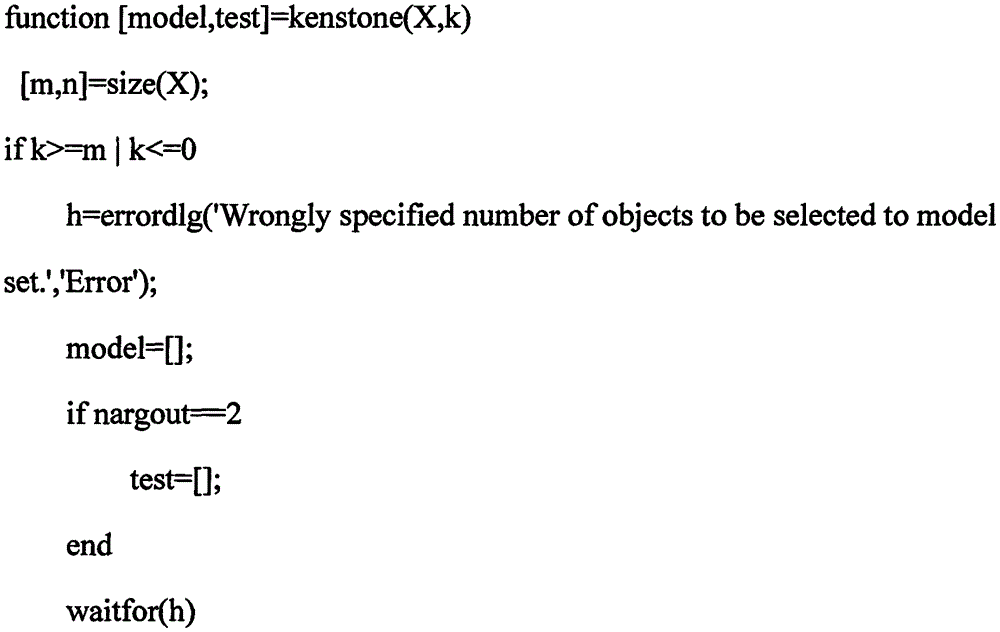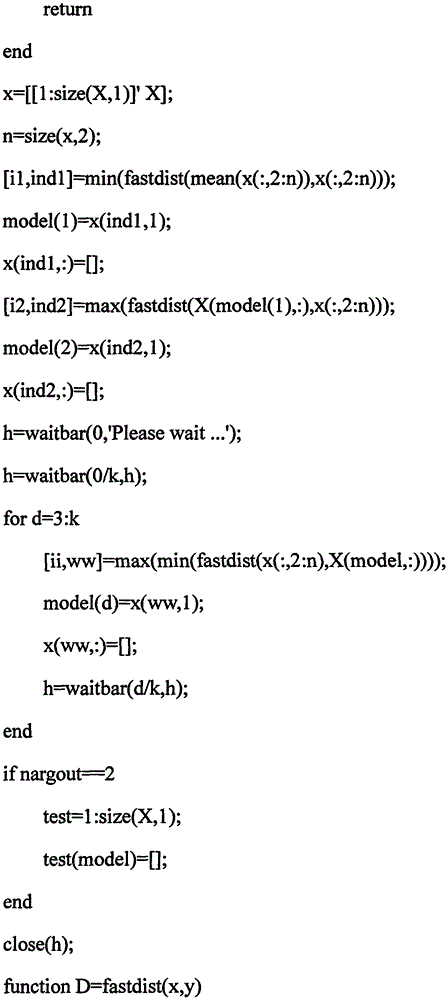Combined detection method used for identification of producing area of Wuyi rock tea
A technology of joint detection and origin, applied in measuring devices, material analysis through optical means, instruments, etc., can solve the problem that the detection data cannot represent the traceability of the origin, and achieve the effect of avoiding insensitive loss functions and reducing computational complexity
- Summary
- Abstract
- Description
- Claims
- Application Information
AI Technical Summary
Problems solved by technology
Method used
Image
Examples
Embodiment 1
[0081] A. Collect rock tea samples from different origins
[0082] The national standard (GB / T 18745-2006) stipulates the scope of geographical protection of Wuyi rock tea, that is, within the administrative division of Wuyishan City, Fujian Province, the present invention is located in Wuyi Street, Chong'an Street, Shangmei, and Xingxia in the Wuyi Rock Tea Geographical Indication Protection Area. Samples were collected in 11 administrative areas including Village, Wufu, Langu, Xinfeng Street, Yangzhuang, Xingtian, Xiamei, and Wutun, and 3 sampling points were randomly selected in each administrative area (respectively A, B, C to be marked), a total of 33 sampling points, the sampling range basically covers the main production areas, and each sampling point takes 15 samples (respectively marked with A-1, A-2...A-15), and obtained 495 samples of Wuyi rock tea in geographical indication protected areas, and other counties and cities in Fujian Province except Wuyishan City (Jian...
Embodiment 2
[0133] Data segmentation adopts Kenston program, K-fold interactive verification, and PLSDA model. According to the above modeling method, the near-infrared spectrum, isotope, electronic tongue and the fusion data of the three are modeled and analyzed. The results are shown in Table 6.
[0134] Table 6: Summary of PLSDA model discrimination results
[0135]
[0136] Using the PLSDA discriminant model, the feature indicators are also complementary. The recognition rate of the three fusion data is higher than that of the single-data PLSDA discriminant model, with a recognition rate of 95.2%, but the PLSDA recognition rate is lower than that of the 100.0% recognition rate of LS- SVM discriminant model.
Embodiment 3
[0138] Data segmentation adopts Kenston program, K-fold interactive verification, and neural network ELM model. According to the above modeling method, the near-infrared spectrum, isotope, electronic tongue and the fusion data of the three are modeled and analyzed. The results are shown in Table 7.
[0139] Table 7: Summary of ELM model discrimination results
[0140]
[0141] The ELM discriminant model is used, and the feature indicators are also complementary. The recognition rate of the three fusion data is higher than that of the single data ELM discriminant model, with a recognition rate of 94.5%, but the recognition rate of ELM is lower than that of LS- SVM discriminant model.
PUM
 Login to View More
Login to View More Abstract
Description
Claims
Application Information
 Login to View More
Login to View More - R&D
- Intellectual Property
- Life Sciences
- Materials
- Tech Scout
- Unparalleled Data Quality
- Higher Quality Content
- 60% Fewer Hallucinations
Browse by: Latest US Patents, China's latest patents, Technical Efficacy Thesaurus, Application Domain, Technology Topic, Popular Technical Reports.
© 2025 PatSnap. All rights reserved.Legal|Privacy policy|Modern Slavery Act Transparency Statement|Sitemap|About US| Contact US: help@patsnap.com



